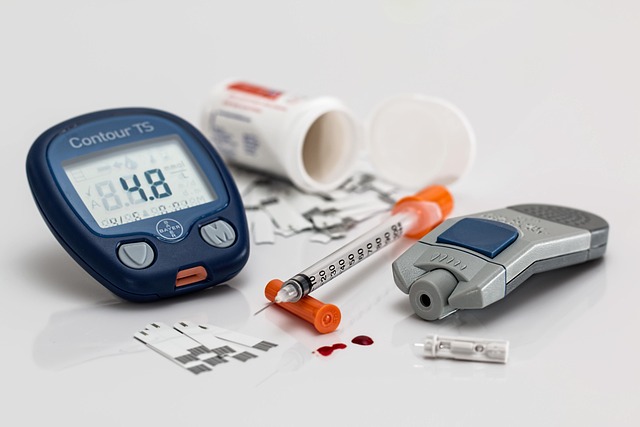Affordable Glucose Monitoring Devices for Diabetics Now Accessible
The landscape of diabetes management is transforming, as affordable glucose monitoring devices for diabetics become increasingly accessible. This development promises to empower individuals living with diabetes, enabling them to track their glucose levels with ease and confidence. As a result, more people are gaining access to essential tools that can significantly enhance their quality of life.

What are glucose monitoring devices for diabetics?
Glucose monitoring devices for diabetics are essential tools that help individuals measure and track their blood sugar levels. These devices come in various forms, ranging from traditional blood glucose meters to more advanced continuous glucose monitors (CGMs). The primary purpose of these devices is to provide accurate and timely information about blood glucose levels, allowing people with diabetes to make informed decisions about their diet, medication, and lifestyle choices.
Traditional blood glucose meters require users to prick their finger to obtain a small blood sample, which is then analyzed by the device to determine the glucose level. On the other hand, CGMs use a small sensor inserted under the skin to measure glucose levels in the interstitial fluid continuously, providing real-time data and trends throughout the day and night.
How do continuous glucose monitors work?
Continuous glucose monitors represent a significant advancement in diabetes management technology. These devices consist of three main components: a sensor, a transmitter, and a receiver or smartphone app. The sensor, typically worn on the abdomen or upper arm, measures glucose levels in the interstitial fluid every few minutes. The transmitter sends this data wirelessly to the receiver or smartphone, where it can be easily viewed and analyzed.
CGMs offer several advantages over traditional blood glucose meters. They provide a more comprehensive picture of glucose trends, allowing users to see how their levels change in response to food, exercise, stress, and other factors. This continuous monitoring can help prevent dangerous high or low blood sugar episodes and improve overall glycemic control.
What role does government play in glucose monitoring?
Government involvement in glucose monitoring has been instrumental in making these devices more accessible and affordable for people with diabetes. Various government initiatives and policies have been implemented to support the development, regulation, and distribution of glucose monitoring devices.
In the United States, for example, the Food and Drug Administration (FDA) plays a crucial role in evaluating and approving glucose monitoring devices for safety and effectiveness. The Centers for Medicare & Medicaid Services (CMS) has also expanded coverage for CGMs, making these devices more accessible to eligible beneficiaries.
Additionally, government-funded research programs have contributed to advancements in glucose monitoring technology, leading to more accurate and user-friendly devices. Some governments have also implemented subsidy programs or negotiated pricing agreements with manufacturers to reduce the cost of these essential devices for patients.
How has the affordability of glucose monitoring devices improved?
The affordability of glucose monitoring devices has significantly improved in recent years, thanks to a combination of factors. Technological advancements have led to more cost-effective manufacturing processes, while increased competition among device manufacturers has helped drive prices down. Government initiatives, insurance coverage expansions, and partnerships between healthcare providers and device companies have also contributed to making these devices more accessible to a broader range of patients.
Many glucose monitoring device manufacturers now offer more affordable options or tiered pricing models to cater to different budget ranges. Some companies have introduced subscription-based services for CGMs, which can help spread out the cost over time and make these advanced devices more attainable for many users.
What are the current options for affordable glucose monitoring devices?
There are several affordable glucose monitoring devices available in the market today, catering to various needs and preferences. Here’s a comparison of some popular options:
| Product/Service | Provider | Key Features | Cost Estimation |
|---|---|---|---|
| FreeStyle Libre | Abbott | Flash glucose monitoring, 14-day sensor wear | $60-$75 per sensor |
| Dexcom G6 | Dexcom | Real-time CGM, 10-day sensor wear, smartphone compatibility | $300-$400 per month |
| Contour Next ONE | Ascensia Diabetes Care | Bluetooth-enabled meter, app integration | $20-$30 for meter, $1-$2 per test strip |
| OneTouch Verio Flex | LifeScan | Color-coded results, Bluetooth connectivity | $25-$35 for meter, $0.50-$1 per test strip |
| Eversense | Senseonics | Implantable CGM, 90-day sensor life | $300-$350 per month |
Prices, rates, or cost estimates mentioned in this article are based on the latest available information but may change over time. Independent research is advised before making financial decisions.
These options represent a range of technologies and price points, allowing individuals to choose a device that best fits their needs and budget. It’s important to note that insurance coverage can significantly affect out-of-pocket costs, so patients should check with their insurance providers to understand their specific coverage options.
The increasing availability of affordable glucose monitoring devices marks a significant step forward in diabetes management. As technology continues to advance and become more accessible, people with diabetes can look forward to even more innovative and cost-effective solutions for monitoring their blood glucose levels. This trend not only improves the quality of life for individuals with diabetes but also contributes to better overall health outcomes and reduced long-term healthcare costs.
This article is for informational purposes only and should not be considered medical advice. Please consult a qualified healthcare professional for personalized guidance and treatment.



